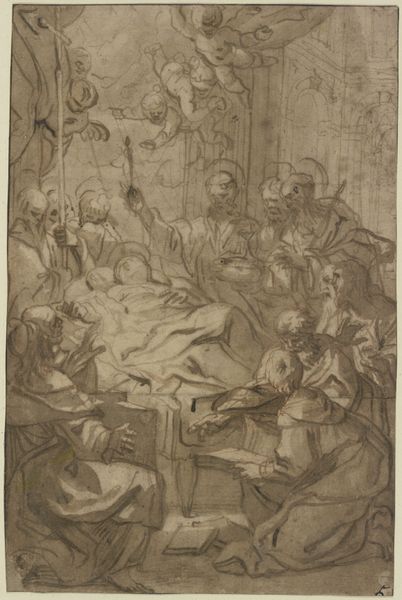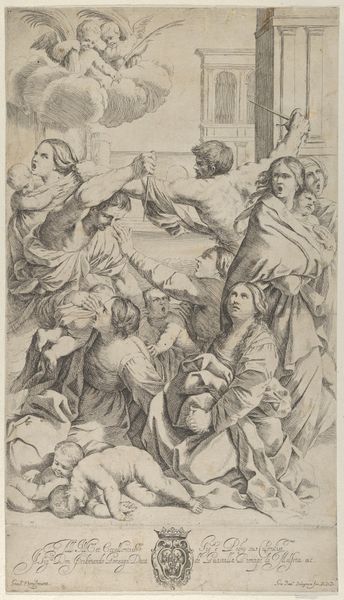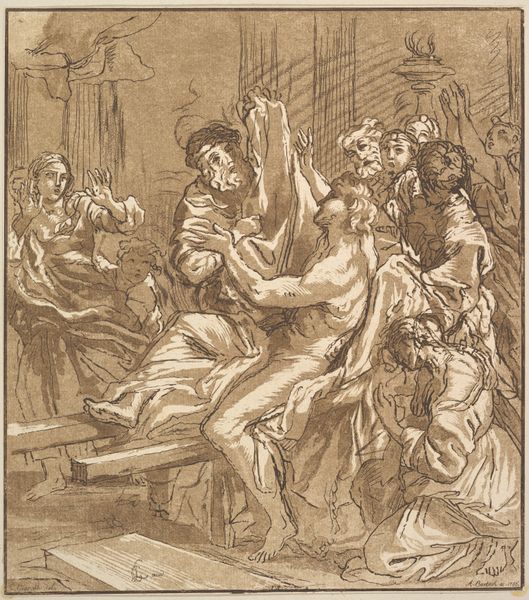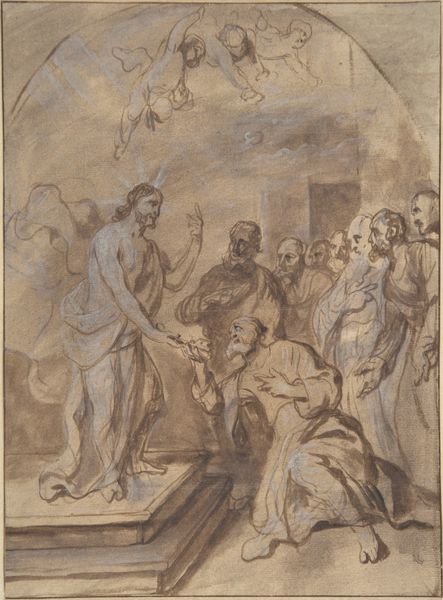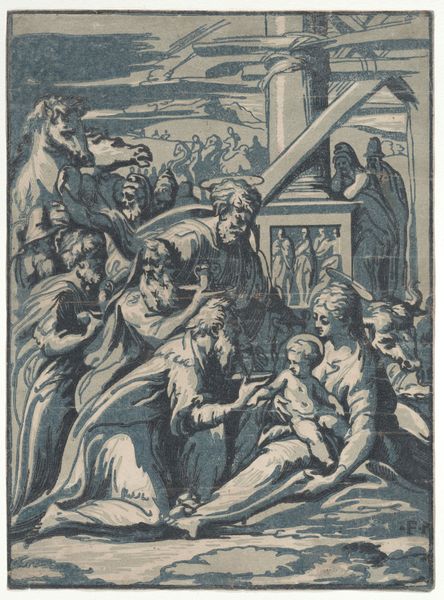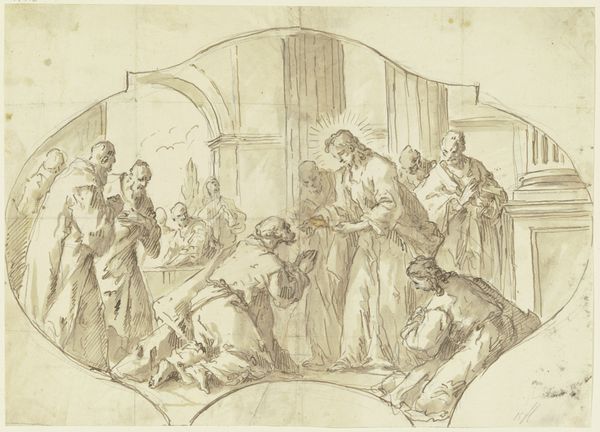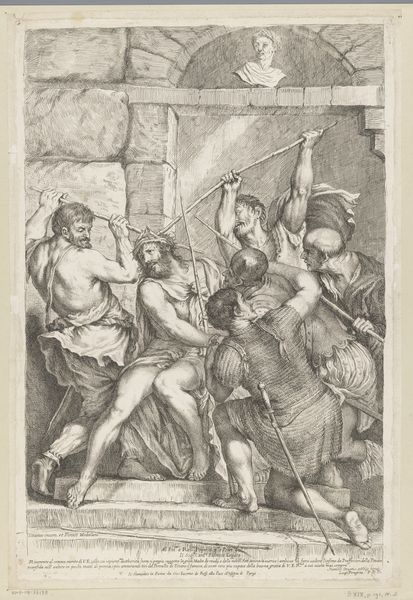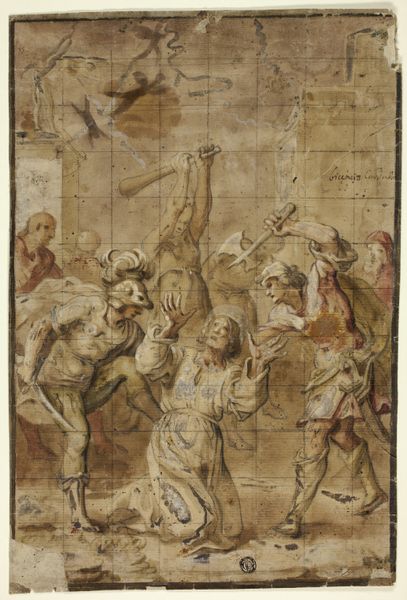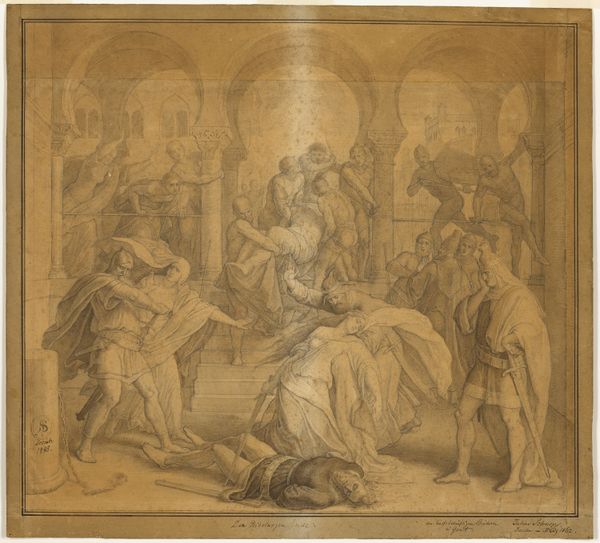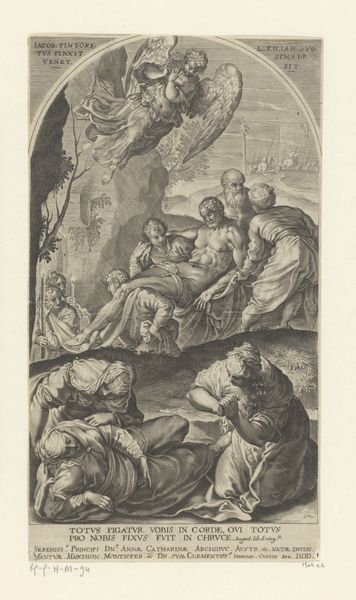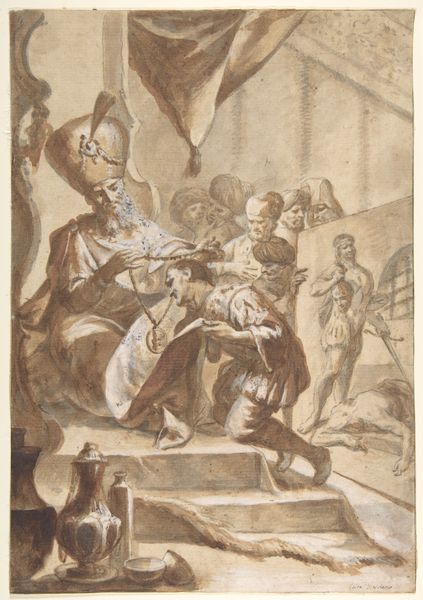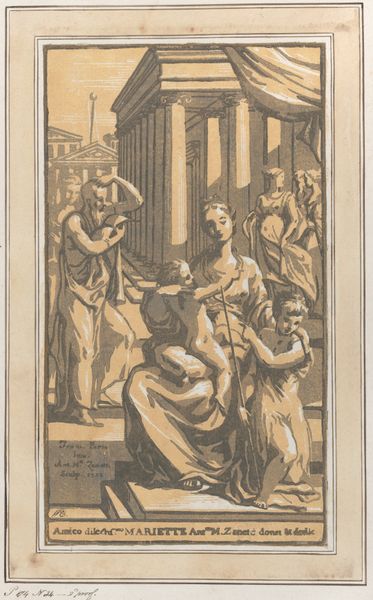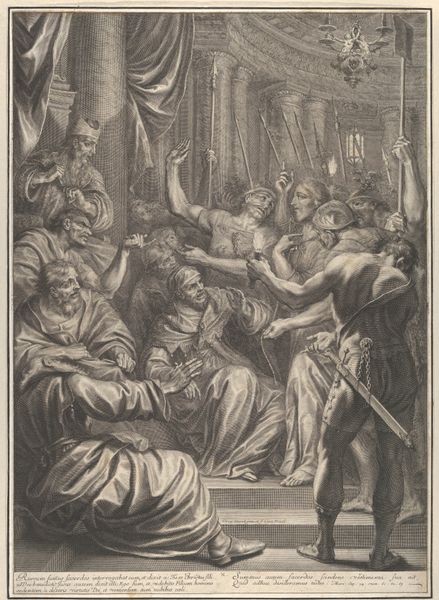
drawing, coloured-pencil, watercolor
#
drawing
#
coloured-pencil
#
baroque
#
figuration
#
watercolor
#
coloured pencil
#
history-painting
#
watercolor
Dimensions: 405 mm (height) x 284 mm (width) (bladmaal)
Editor: This watercolor and colored pencil drawing from between 1625 and 1715, titled "En sejrende feltherre i audiens hos et herskerpar," depicts what appears to be a victorious general's audience with a royal couple. There's a strange duality to the composition—the ghostly figures on the left, contrasted with the richer colors on the right side. How do you interpret this dynamic? Curator: It's interesting you pick up on that. I see the split as a commentary on power and its performance, reflecting Baroque-era fascinations with spectacle and the often-brutal realities masked by displays of grandeur. The victorious general becomes a symbol, stripped bare, if you will. Note how the work stages a public drama, complete with architectural elements framing the narrative. How do you think gender and class dynamics are being represented in this scene? Editor: I hadn't considered the stage-like setting so explicitly! It seems that power dynamics are very overtly performative here, especially with the way the royal couple is literally elevated above everyone else. The women appear somewhat ornamental, almost trophies alongside the general. Curator: Exactly! The composition also reflects contemporary societal structures. Notice the artist’s engagement, consciously or not, with the complex choreography of status. These performative gender roles are critical here, wouldn't you agree? The queen's passivity mirrors patriarchal expectations even as she wields a form of influence. Do you think it accurately captures power in that period or comments upon it? Editor: It certainly feels like a critical perspective, even if subtle. There’s an artificiality to the whole scene that hints at underlying tensions within the power structure. It almost feels like the artist is aware of these imbalances. Curator: I agree. The artist offers not just a record, but an interpretation of power and its multifaceted influences. This work subtly challenges, and ultimately, reflects upon its inherent social constructions. Editor: This has completely shifted how I see the piece. I initially just viewed it as a historical record, but now I recognize the artist's commentary on societal structures and power. Thank you.
Comments
No comments
Be the first to comment and join the conversation on the ultimate creative platform.
